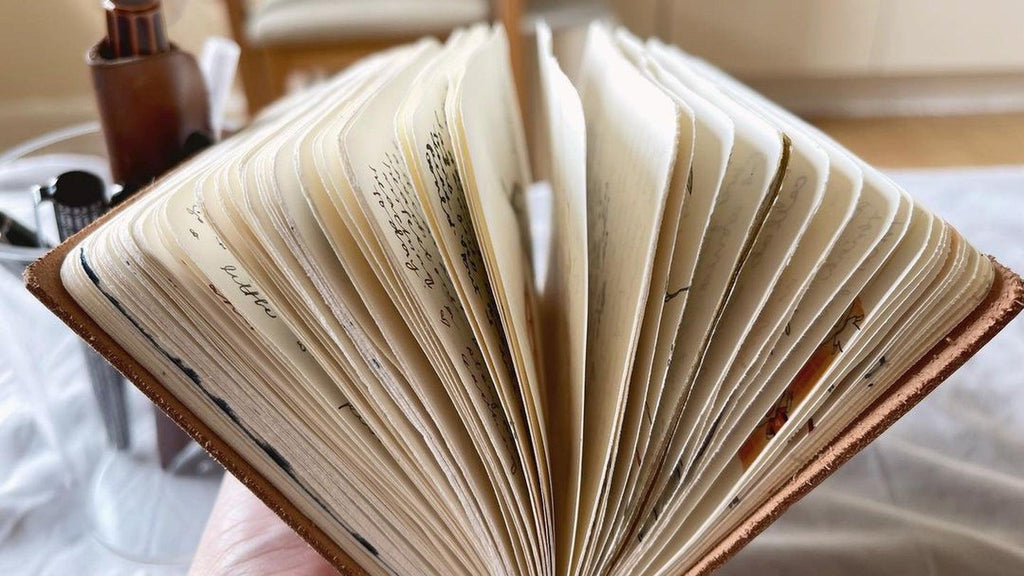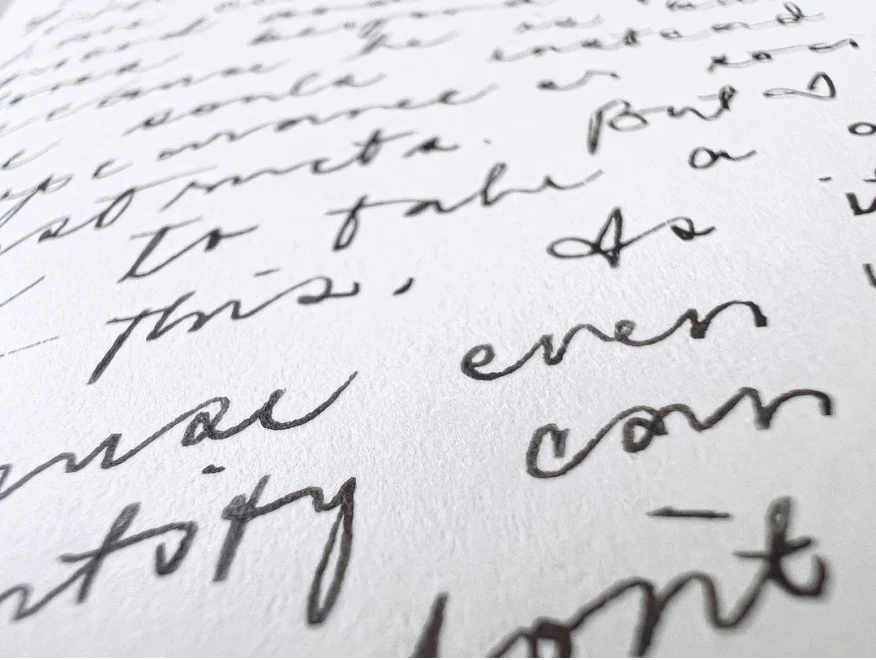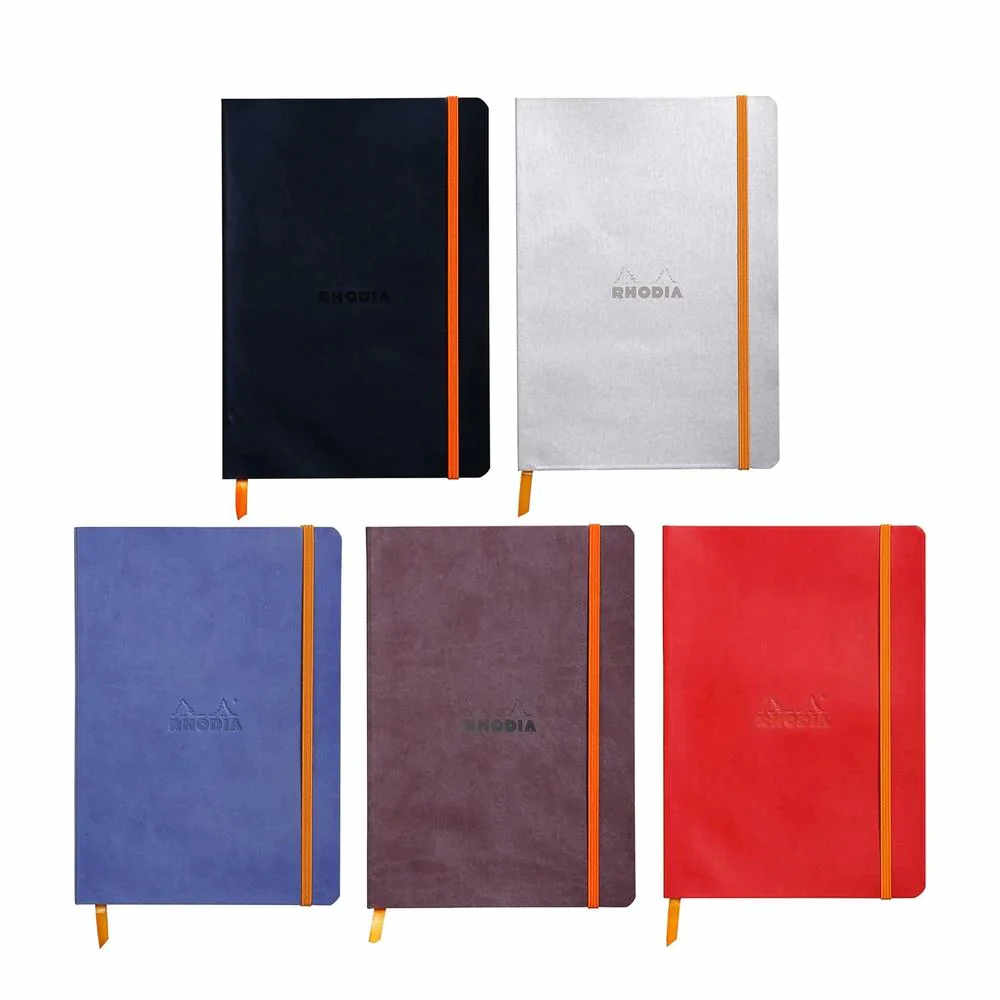Table of Contents
 Image from @micahfinds on Instagram
Image from @micahfinds on Instagram
Even if you’re a fountain pen newbie, chances are you’ve discovered how important fountain pen-friendly paper is to the experience. Not all types of paper are created equally, and having a fountain pen means using the right type of paper to bring out its best qualities.
Finding fountain pen-friendly paper can be a bit challenging. There are certain characteristics that you need to look for, such as paper thickness, texture, and absorbency. Here, we’ve outlined a short guide on what properties to look for in fountain pen paper as well as some great recommendations for you to try.
What should I look for in fountain pen paper?

Feathering. In most cases, you may notice that writing on everyday copy paper will cause ink to creep out of your letters. This can cause your handwriting to look blurry and messy. Using high-quality paper can help you avoid this. You can also use finer nibs to avoid feathering.
Show-through. Show-through refers to how much of your writing you can see on the other side of a page. This is sometimes called ghosting. The thicker the paper (measured in gsm, or grams per square meter’), the less show-through. Ink color may also affect show-through.
Bleed-through. Bleed-through means that the ink you’ve laid down with your fountain pen has been absorbed through the paper. Most fountain pen-friendly papers are highly resistant to bleed-through, but there are some differences depending on the type and brand that you purchase.
Smoothness and smudging. If you’re been writing with fountain pens for some time now, you know that smoothness and minimal smudging matters a great deal. Fountain pen-friendly papers are usually coated to achieve this.
Paper color. Paper color matters! You can choose between white or cream, in most cases, but the former will definitely show off vibrant fountain pen inks more easily. However, creamier papers are easier on the eyes.
Without further ado, here are some excellent fountain pen-friendly paper options you can try out:
Clairefontaine

Clairefontaine is very popular in the fountain pen community, and for good reason. Their pads and notebooks feature 90gsm coated writing paper that works well with fountain pens. It resists feathering, show-through, and bleed-through without taking too long to dry. It is also relatively inexpensive and quite accessible.
Rhodia 
Rhodia paper may seem familiar if you’ve used Clairefontaine. This is because they are made by a sister company. However, Rhodia has a different design and a slightly different texture. Compared to Clairefontaine, Rhodia has quicker dry times, is less slick, and slightly more absorbent. Their paper is at 80gsm and allows for minimal bleed-through or show-through.
Midori 
Midori papers have two lines: MD and Cotton. Both work exceptionally well with fountain pens. This is more absorbent than Clairefontaine, particularly the Cotton variant, while still maintaining a pleasant writing experience. However, there is a significant amount of show-through, which may bother some writers that want to use both sides of a page. These papers are also a bit on the creamy side rather than white.
Tomoe River 
Perhaps the thinnest paper we have featured on this list is Tomoe River, which is available in 52gsm and 68gsm variants. But don’t let that fool you! Despite being incredibly thin and light, fountain pen ink doesn’t bleed through the page (in most cases). This paper has developed a cult following due to its superior texture and ability to show off fountain pen ink with shading, sheening, and shimmering qualities.
Kokuyo
Kokuyo is a brand that is perfect for students who are fountain pen users, particularly the line of Campus notebooks. These notebooks and loose-leaf papers are offered at affordable prices. The paper is smooth and shows some sheen and decent shading. In most cases, your pens won’t bleed through to the other side. However, ghosting is a bit high, so be aware of that when considering this type of fountain pen paper.
The Bottom Line
Getting acquainted with more aspects of your fountain pen hobby is not only fun, but it can also teach you certain lessons. Whether you’re learning to be patient with ink drying times or relishing the smoothness of your nib across the page, learning about things like fountain pen paper can really elevate your writing experience and realizations.
Written by EndlessPens Blogger Ramona Kabigting